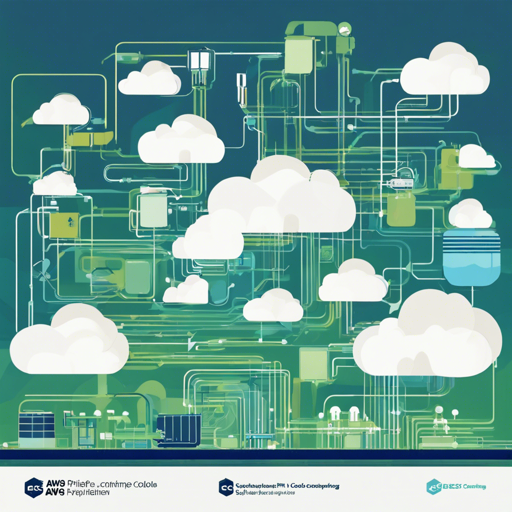Welcome to the ultimate guide on deploying containers using Amazon Web Services (AWS)! In this article, we will dissect how to leverage ECS (Elastic Container Service), ECR (Elastic Container Registry), CodePipeline, and Git with Terraform. Whether you’re a seasoned developer or just starting, this guide is tailored to help you deploy your applications seamlessly.
Understanding the Architecture
Before diving into the deployment process, let’s familiarize ourselves with the components of our architecture:

The image above illustrates the components of our deployment strategy using AWS services linked with ECS, ECR, and other necessary tools.
Deployment Pipeline Overview

This image visually guides you through the stages of our deployment pipeline. Each step plays a critical role in ensuring your application is deployed efficiently and reliably.
How to Deploy Your Application
Now, let’s roll up our sleeves and get to work! Follow these steps to deploy your application.
Step 1: Edit Your Preferences
Start by configuring your application preferences in the variables.tf file.
variable "cluster_name" {
description = "ECS Cluster Name"
default = "web-app"
}
variable "app_repository_name" {
description = "ECR Repository Name"
default = "web-app"
}
variable "container_name" {
description = "Container app name"
default = "micro-api"
}In this code snippet, think of variables like ingredients in a recipe. Just like you specify quantities and types of ingredients, here you specify your application’s name, repository details, and cluster name.
Step 2: Edit Auto Scaling Metrics
Next, adjust the auto-scaling settings to tailor your application’s needs.
variable "desired_tasks" {
description = "Number of containers desired to run app task"
default = 2
}
variable "min_tasks" {
description = "Minimum"
default = 2
}
variable "max_tasks" {
description = "Maximum"
default = 4
}
variable "cpu_to_scale_up" {
description = "CPU % to Scale Up the number of containers"
default = 80
}
variable "cpu_to_scale_down" {
description = "CPU % to Scale Down the number of containers"
default = 30
}Consider this section like adjusting the thermostat in your house. You set boundaries for how hot or cold it gets, similarly, here you set the conditions under which your application can scale its resources to meet demand.
Step 3: Edit Your Build Steps
Next, customize your build steps in the module/pipeline/templates/buildspec.yml file. This demo shows how to dockerize and deploy a Node.JS application.
Executing the Deployment
1) Create a GitHub Access Token
First, you need to create a GitHub Access Token for command line usage. For detailed instructions, visit the GitHub guide.
Once created, export your GitHub Token as an environment variable:
export GITHUB_TOKEN=YOUR_TOKEN2) Initialize Terraform
Next, perform the following commands in your terminal:
terraform init
terraform plan
terraform applyTroubleshooting Tips
If you encounter issues during deployment, here are a few troubleshooting suggestions:
- Double-check your GitHub Access Token—ensure it has the necessary permissions.
- Inspect your AWS credentials and permissions, ensuring they are set correctly.
- Review your environment variables to verify they match the required formats.
- If you face issues with the auto-scaling metrics, adjust the values accordingly and try deploying again.
For more insights, updates, or to collaborate on AI development projects, stay connected with fxis.ai.
References
- Easy Deploy Your Docker Applications to AWS Using ECS and Fargate
- ECS Terraform – By Alex
- Terraform-ECS by ArminC
At fxis.ai, we believe that such advancements are crucial for the future of AI, as they enable more comprehensive and effective solutions. Our team is continually exploring new methodologies to push the envelope in artificial intelligence, ensuring that our clients benefit from the latest technological innovations.
Now you are armed with the essentials for deploying your applications on AWS! Happy coding!

